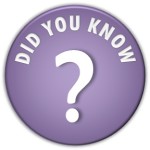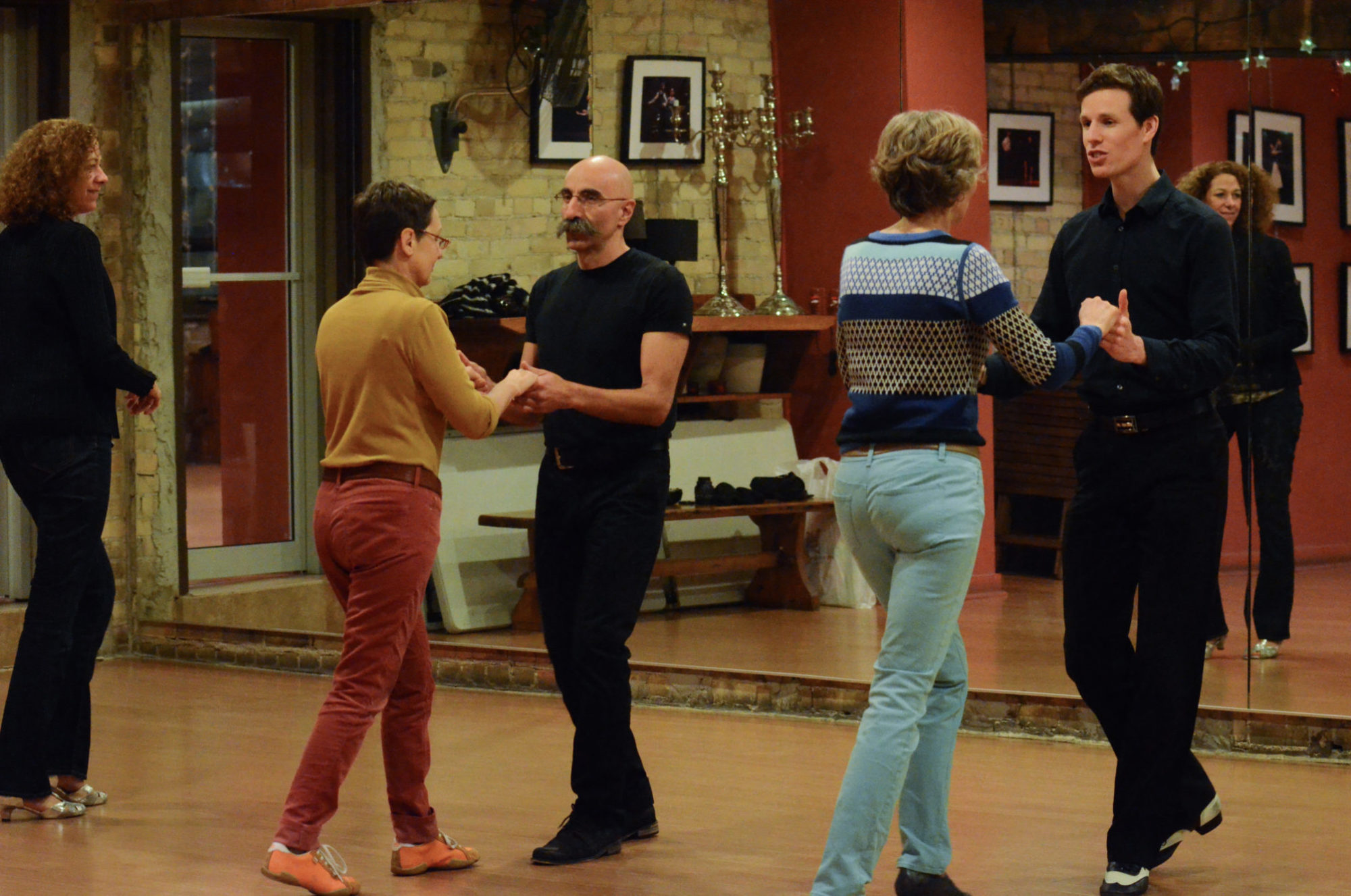Yes dancers, we’ve all felt it, we all fear it. Dizziness can instantly turn any ballroom dance from fun to terrifying, as we suddenly clutch our partner, afraid we’ll be carried to the floor at any moment. But there is help - dizziness cures we can use for both the beginner and the experienced dancer to enjoy a dance without fear.
‘Dizziness’ as I am addressing it here is actually vertigo, that sensation we get when we’ve spun too many times and the world is racing to catch up. Basically your brain gets confused as to where your body actually is in space, causing various stress-related reactions in the body. It can range from mild discomfort to complete disorientation and nausea.
Spotting - the #1 Dizziness Cure
Dizziness occurs when we observe things moving past us during a turn. By looking at or ‘spotting’ a non-moving object when beginning and finishing your turns, you can cut down on the transition period.
Here’s the basic idea:
- Find something to look at, at eye level, big enough to see easily.
- Slowly start making a turn in place (ex. a basic underarm turn works great), while looking at the object with your nose (this keeps your head from tilting). Continue until you can’t turn any further without turning your nose away.
- Snap your head around to face the object again, and let your body catch up to finish the turn. To use a rather psychedelic approach, I imagine I have ‘eye-hands’, that reach out and grab the object, keeping my head from swinging too far.
- Practice, gradually increasing the speed of the turns (until you are too dizzy to continue).
 You don’t need to risk whiplash snapping your head around. Just go fast enough to blur the objects that pass you, and don’t try to focus on them.
You don’t need to risk whiplash snapping your head around. Just go fast enough to blur the objects that pass you, and don’t try to focus on them.
Partial Spotting
What if the turns are more gradual, like the reverse turns in a Viennese waltz? In this case, spotting two objects, one down the line-of-dance (LOD), and one against the LOD, is an effective dizziness cure. In the case of the reverse turn, try switching from one direction to the other on count ‘2’. Your head will seem to move slightly right, then snap left as you look the other way, like a typewriter.
Some turns are even more gradual, like the spot turn combination in Viennese waltz or rumba. Some dancers find their dizziness cure by focusing on their partner as the ‘non-moving object’. If this isn’t possible however, you will have to spot objects ahead of the turn with your eyes - every 1/4 or 1/8 turn if you can. This last technique is the hardest of all, so be patient.
 Studies have shown that the brain reacts less and less to vertigo the more you practice spinning. It might take years, but your body will adapt, even without spotting!
Studies have shown that the brain reacts less and less to vertigo the more you practice spinning. It might take years, but your body will adapt, even without spotting!
Alternatives to Spotting
Spotting takes a while to master, so what’s a dancer to do in the meantime? One way to get around the problem is to alternate turning directions. For example, follow a right underarm turn with a ladies broken left (salsa). This doesn’t work for everybody, but for many, it ‘cancels out’ the spinning sensation from the first turn. Another option is to build up patterns that don’t require much turning, to buy you time when dizziness hits.
But keep practicing your spotting, and you’ll be a sure-footed ballroom dancer before you know it.
 For those of you who’ve found their dizziness cures, how much practicing did it take?
For those of you who’ve found their dizziness cures, how much practicing did it take?
Credits:
Dance Forums
Neurologica Blog
About the Author
Ian Crewe has been dancing ballroom for almost 20 years, and has a Licentiate in American smooth and rhythm. His passion for dance and his endless seeking for ways to reach new audiences eventually led him to blogging and the World Wide Web. Ian currently teaches ballroom at the Joy of Dance Centre, Toronto, ON, Canada.
